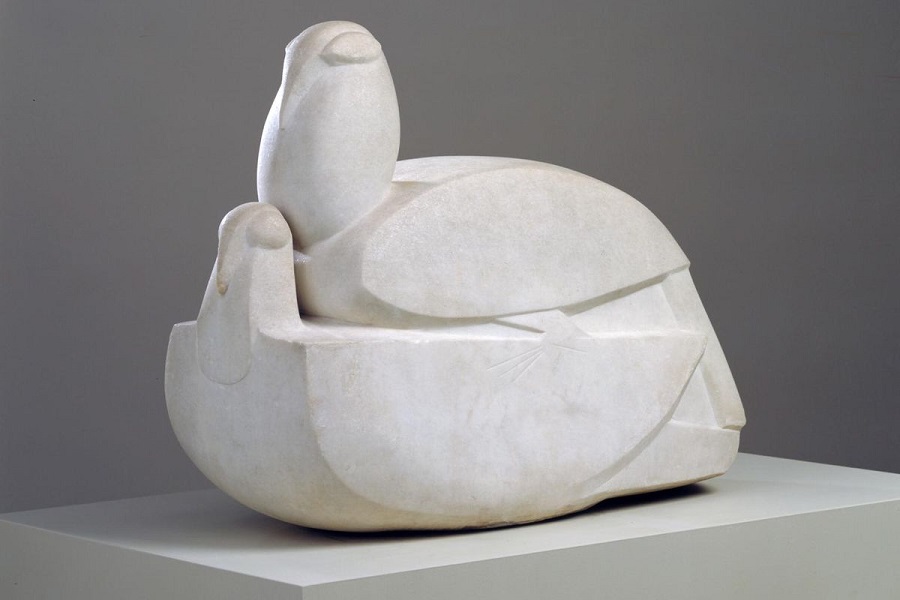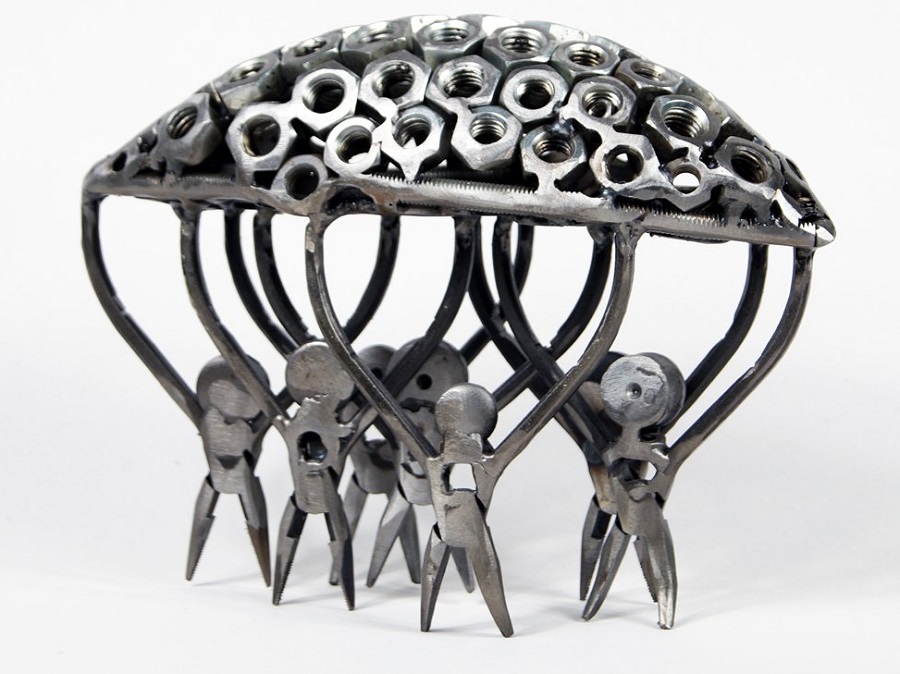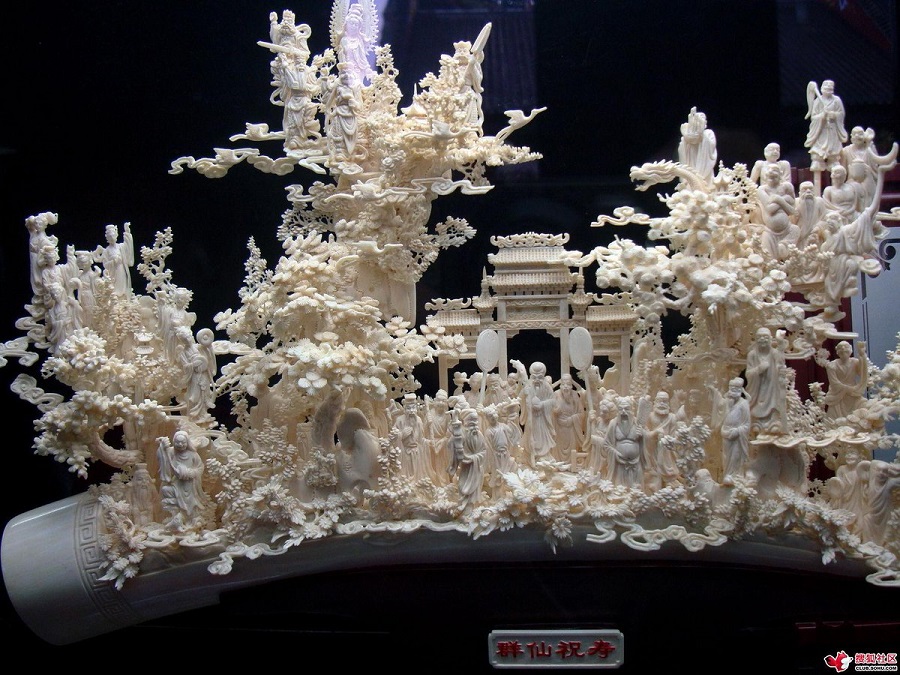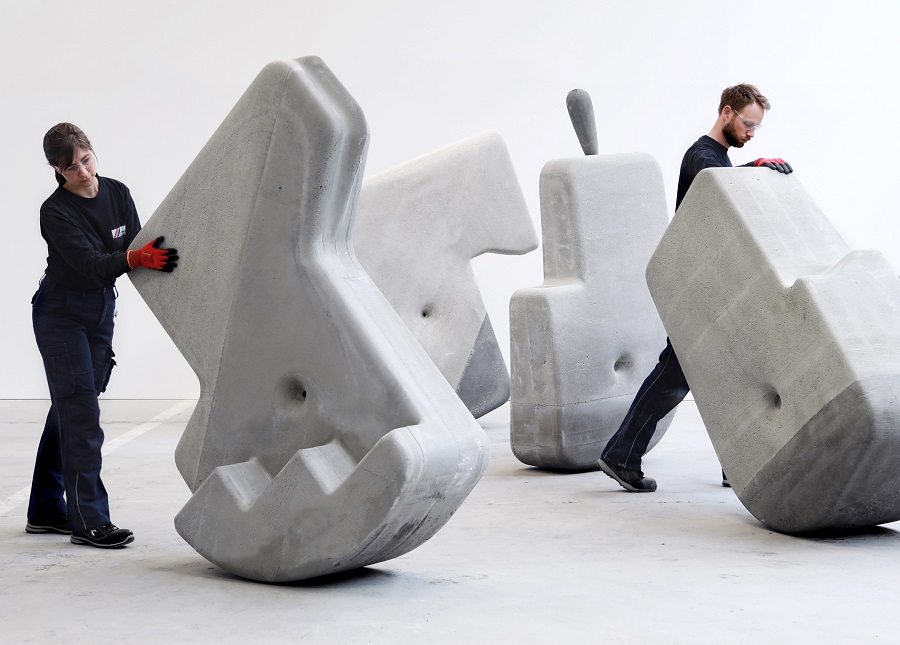Matériaux de sculpture
Matériaux de sculpture
Dans cet article, je partagerai avec vous mes connaissances sur les matériaux de sculpture. Veuillez comprendre s'il y a une description incomplète. Tout matériau pouvant être façonné en trois dimensions peut être utilisé pour la gravure. Certains matériaux se sont révélés particulièrement adaptés en raison de leurs propriétés structurelles, esthétiques et de leur praticité. Les plus importants sont la pierre, le bois, le métal, l'argile, l'ivoire et le gypse. Ceux-ci peuvent également être appelés matériaux de sculpture traditionnels. Il existe de nombreux matériaux secondaires, dont beaucoup n’ont commencé à être utilisés que récemment. Comme certaines sculptures issues de matériaux recyclés, de lumière et de voix.
Matériaux de sculpture traditionnels
Quel matériau est couramment utilisé en sculpture ? Le premier matériau de sculpture traditionnelle que je souhaite présenter est la pierre. Tout au long de l’histoire, la pierre a été le principal matériau de fabrication de la sculpture monumentale. Il y a des raisons pratiques à cela : de nombreux types de pierre sont très résistants aux intempéries et donc adaptés à un usage extérieur ; la pierre est disponible dans toutes les régions du monde et peut être obtenue en gros blocs ; de nombreuses pierres ont une texture assez homogène et une dureté uniforme qui les rendent adaptées à la sculpture ; la pierre a été le principal matériau utilisé pour l'architecture monumentale à laquelle tant de sculptures ont été associées.
Calcul
Des pierres appartenant aux trois principales catégories de formations rocheuses sont utilisées dans la sculpture.

matériaux de sculpture en pierre
Roches ignées
Les roches ignées sont composées de granit, de diorite, de basalte et d'obsidienne, formées par le refroidissement des minéraux en fusion à mesure qu'ils s'approchent de la surface de la terre. Ce sont les pierres les plus dures utilisées pour la sculpture.
Roches sédimentaires
Les roches sédimentaires, notamment le grès et le calcaire, sont formées par l'accumulation de minéraux et de matières organiques. Le grès est un agrégat de particules de pierre érodées liées par des substances cimentaires. Le calcaire est principalement formé de résidus calcaires d’êtres vivants.
Albâtre
L'albâtre (gypse) est également un type de roche sédimentaire, un dépôt chimique. Il existe de nombreux types de grès et de calcaire utilisés dans la sculpture, et la qualité et l'adaptabilité de la sculpture varient considérablement. En raison de leur mode de formation, de nombreuses roches sédimentaires présentent des strates évidentes et sont riches en fossiles.
Roches métamorphiques
Les roches métamorphiques sont produites en raison de changements dans la structure des roches sédimentaires et ignées dus à une pression extrême ou à une température élevée. La roche métamorphique la plus connue de la sculpture est le marbre, il s'agit de calcaire recristallisé. Les sculpteurs romains et de la Renaissance, en particulier Michel-Ange (Michel-Ange), ont utilisé le marbre de Carrare le plus célèbre d'Italie, et il est encore largement utilisé aujourd'hui. Les variétés les plus connues utilisées par les sculpteurs grecs sont le marbre (Pantelic) et le Parian (Parian), qui sont constitués du Parthénon et de ses sculptures.
Parce que la pierre est très lourde et manque de résistance à la traction, si la sculpture est trop fine et mal soutenue, elle peut facilement se briser. Par conséquent, un traitement à grande échelle sans projections fragiles est généralement préféré dans les sculptures des Indiens d'Amérique en Égypte et à l'époque précolombienne. Cependant, certaines pierres peuvent être manipulées plus librement et plus ouvertement. Certains sculpteurs européens ont spécialement traité le marbre avec presque les mêmes degrés de liberté que le bronze, mais cet affichage exquis est obtenu en surmontant plutôt qu'en cédant aux caractéristiques du matériau lui-même.
La couleur et la texture de la pierre sont ses caractéristiques les plus agréables. Certaines pierres ont un grain fin et peuvent être sculptées avec des détails fins et finies avec un degré élevé de polissage. D'autres sont à grains grossiers et nécessitent un traitement plus approfondi. Le marbre de Carrare blanc pur a une texture translucide qui semble briller et réagir à la lumière de manière subtile et subtile. (Ces caractéristiques du marbre ont été bien développées par des sculpteurs italiens du XVe siècle tels que Donatello et Desiderio da Settignano.)
La couleur du granit est inégale, mais il a les qualités du sel et du poivre et peut scintiller avec les cristaux de mica et de quartz. Il peut être principalement noir ou blanc, ou toutes sortes de gris, roses et rouges. Les grès varient en texture, apparaissant généralement dans une variété de couleurs chaudes jaune clair, rose et rouge. La couleur du calcaire varie considérablement et la présence de fossiles peut augmenter l'attrait de sa surface. De nombreuses pierres sont riches en couleurs en raison de leurs veines irrégulières.
Pierres dures
Les pierres dures, ou pierres semi-précieuses, constituent un groupe spécial qui comprend certaines des substances les plus belles et les plus décoratives. Le travail de ces pierres, ainsi que le travail de pierres précieuses plus précieuses, est généralement considéré comme faisant partie des arts glyptiques (sculpture ou gravure de pierres précieuses) ou lapidaires, mais de nombreux artefacts produits à partir de celles-ci peuvent être considérés comme des sculptures à petite échelle. Ils sont souvent plus difficiles à travailler que l'acier. La première des pierres dures utilisées pour la sculpture est le jade, vénéré par les anciens Chinois, qui le travaillaient, avec d'autres pierres dures, avec une extrême habileté. Il a également été utilisé de manière sculpturale par des artistes mayas et mexicains. D’autres pierres dures importantes sont le cristal de roche, le quartz rose, l’améthyste, l’agate et le jaspe.
Bois
Matériau principal de la sculpture tribale en Afrique, en Océanie et en Amérique du Nord, le bois a également été utilisé par toutes les grandes civilisations ; il a été largement utilisé au Moyen Âge, par exemple, notamment en Allemagne et en Europe centrale. Parmi les sculpteurs modernes qui ont utilisé le bois pour des œuvres importantes figurent Ernst Barlach, Ossip Zadkine et Henry Moore.

matériaux de sculpture en bois
Both hardwoods and softwoods are used for sculpture. Some are close-grained, and they cut like cheese; others are open-grained and stringy. The fibrous structure of wood gives it considerable tensile strength, so that it may be carved thinly and with greater freedom than stone. For large or complex open compositions, a number of pieces of wood may be jointed. Wood is used mainly for indoor sculpture, for it is not as tough or durable as stone; changes of humidity and temperature may cause it to split, and it is subject to attack by insects and fungus. The grain of wood is one of its most attractive features, giving variety of pattern and texture to its surfaces. Its colours, too, are subtle and varied. In general, wood has a warmth that stone does not have, but it lacks the massive dignity and weight of stone.
The principal woods for sculpture are oak, mahogany, limewood, walnut, elm, pine, cedar, boxwood, pear, and ebony; but many others are also used. The sizes of wood available are limited by the sizes of trees; North American Indians, for example, could carve gigantic totem poles in pine, but boxwood is available only in small pieces.
In the 20th century, many sculptors used wood as a medium for construction and carving. Laminated wood, particle board and block and plank-shaped wood can be glued, joined, tightened or bolted together, and have various finishes.
Métal
Wherever metal technology was developed, metal has been used in sculpture. The number of metal sculptures surviving from the ancient world does not correctly reflect the extent of their use, because a large number of sculptures were plundered and melted. In this way, countless metal sculptures of the Far East and Greece, as well as almost all the gold ornaments of pre-Columbian American Indians.

metal sculpture materials
The most commonly used metal for sculpture is bronze, which is basically an alloy of copper and tin; but gold, silver, aluminum, copper, brass, lead, and iron have also been widely used. Most metals have extremely high strength, hardness and durability, and their tensile strength makes design freedom much greater than stone or wood. The life-size bronze puppet that is firmly fixed to the base does not need any support other than its own feet, and can even be placed on one foot. A considerable attenuation of the form is also possible without the risk of rupture.
The color, bright luster and reflectivity of the metal surface have been highly evaluated and have been fully utilized in sculpture, although since the Renaissance, artificial patina has usually been chosen as a bronze finish.
Bronze
Metal can be processed in many ways to produce sculptures. They can be cast-that is, melted and poured into molds. Like coin manufacturing, it is extruded into a mold under pressure; or works directly-for example, by hammering, bending, cutting, welding and bulging (hammering or embossing).
The important traditions of bronze sculptures are Greece, Rome, India (especially Chora), Africa (Bini and Yoruba), Italian Renaissance and Chinese. Gold was widely used in small works in the Americas before Columbus and in Europe in the Middle Ages. A fairly new discovery, aluminum has been heavily used by modern sculptors. Iron has not been used as a casting material, but in recent years, it has become a popular material directly processed by techniques similar to blacksmiths. Sheet metal is one of the main materials used in architectural sculpture today. American sculptor David Smith effectively used sheet stainless steel.
Clay
Clay is the most common, easily available of all materials and cheap sculpture materials used in sculpture. It has been used for modeling animal and human models since it was discovered how to cook a pot. Since then it has been one of the main materials for sculptors.

clay sculpture materials
Clay has four characteristics and can be widely used: when wet, it is the most plastic of all substances, easy to model and can record the most detailed impression; when it is partially dried to the leather hard state or completely dried, it Carving and scraping; when mixed with enough water, it becomes a creamy liquid called a cream, which can be poured into molds and allowed to dry; when at 700 to 1,400 ° C (1,300 to 2,600 ° F) When burned at temperatures of 50 ° C, it will undergo irreversible structural changes, making it permanently hard and extremely durable.
The sculptor uses clay sculpture materials as a material for creative ideas. Used for preliminary models, then cast in plaster, metal and concrete and other materials or carved in stone; and pottery sculpture.
Depending on the nature of the clay body itself and the temperature at which it is fired, a finished pottery product is said to be earthenware, which is opaque, relatively soft, and porous; stoneware, which is hard, nonporous, and more or less vitrified; or porcelain, which is fine-textured, vitrified, and translucent. All three types of pottery are used for sculpture. Sculpture made in low-fired clays, particularly buff and red clays, is known as terra-cotta (baked earth). This term is used inconsistently, however, and is often extended to cover all forms of pottery sculpture.
Unglazed clay bodies can be smooth or coarse in texture and may be coloured white, gray, buff, brown, pink, or red. Pottery sculpture can be decorated with any of the techniques invented by potters and coated with a variety of beautiful glazes.
Paleolithic sculptors produced relief and in-the-round work in unfired clay. The ancient Chinese, particularly during the Tang (618–907) and Song (960–1279) dynasties, made superb pottery sculpture, including large-scale human figures. The best-known Greek works are the intimate small-scale figures and groups from Tanagra. Mexican and Maya sculptor-potters produced vigorous, directly modeled figures. During the Renaissance, pottery was used in Italy for major sculptural projects, including the large-scale glazed and coloured sculptures of Luca della Robbia and his family, which are among the finest works in the medium. One of the most popular uses of the pottery medium has been for the manufacture of figurines—at Staffordshire, Meissen, and Sèvres, for example.
Ivory
The main source of ivory is elephant tusks; but walruses, hippos, narwhals (an arctic aquatic animal), and in the Paleolithic period, mammoth ivory was also used for sculpture. Ivory is dense, hard and difficult to work. Its color is milky white, which usually turns yellow with age. This will require high polishing. The ivory can be cut into panels for relief or cut into round wooden blocks. Or you can use the shape of ivory itself. The physical characteristics of the material have caused the most delicate and meticulous carving, and the superb craftsmanship is also very common.

ivory sculpture materials
Ivory was used extensively in antiquity in the Middle and Far East and the Mediterranean. An almost unbroken Christian tradition of ivory carving reaches from Rome and Byzantium to the end of the Middle Ages. Throughout this time, ivory was used mainly in relief, often in conjunction with precious metals, enamels, and precious stones to produce the most splendid effects. Some of its main sculptural uses were for devotional diptychs, portable altars, book covers, retables (raised shelves above altars), caskets, and crucifixes. The Baroque period, too, is rich in ivories, especially in Germany. A fine tradition of ivory carving also existed in Benin, a former kingdom of West Africa.
Horn and Bone
Related to ivory, horn and bone have been used since Paleolithic times for small-scale sculpture. Reindeer horn and walrus tusks were two of the Eskimo carver’s most important materials. One of the finest of all medieval “ivories” is a carving in whalebone, The Adoration of the Magi (Victoria and Albert Museum, London).
Plaster
Plaster of paris (sulfate of lime) is especially useful for the production of molds, casts, and preliminary models. It was used by Egyptian and Greek sculptors as a casting medium and is today the most versatile material in the sculptor’s workshop.

plaster sculpture materials
When mixed with water, the stucco will recrystallize or solidify within a short period of time (ie, become hard and inert), and its volume will increase slightly. After curing, it is relatively fragile and lacks characteristics, so it has limited use in completing the work. Gypsum can be poured as a liquid, directly modeled with the appropriate consistency, or easily carved after curing. Other materials can be added to delay its solidification, increase its hardness or heat resistance, change its color or enhance its strength.
The main sculptural use of plaster in the past was for molding and casting clay models as a stage in the production of cast metal sculpture. Many sculptors today omit the clay-modeling stage and model directly in plaster. As a mold material in the casting of concrete and fibreglass sculpture, plaster is widely used. It has great value as a material for reproducing existing sculpture; many museums, for example, use such casts for study purposes.
Non Traditional Sculpture Materials
There are many non traditional sculpture materials such as concrete instead of stone to be a trendy material.
Concrete
Basically, concrete is a mixture of an aggregate (usually sand and small pieces of stone) bound together by cement. A variety of stones, such as crushed marble, granite chips, and gravel, can be used, each giving a different effect of colour and texture. Commercial cement is gray, white, or black; but it can be coloured by additives. The cement most widely used by sculptors is ciment fondu, which is extremely hard and quick setting. A recent invention—at least, in appropriate forms for sculpture—concrete is rapidly replacing stone for certain types of work. Because it is cheap, hard, tough, and durable, it is particularly suitable for large outdoor projects, especially decorative wall surfaces. With proper reinforcement it permits great freedom of design. And by using techniques similar to those of the building industry, sculptors are able to create works in concrete on a gigantic scale.

concrete sculpture materials
Résine
When synthetic resins, especially polyesters, are reinforced with laminations of glass fibre, the result is a lightweight shell that is extremely strong, hard, and durable. It is usually known simply as fibreglass. After having been successfully used for car bodies, boat hulls, and the like, it has developed recently into an important material for sculpture. Because the material is visually unattractive in itself, it is usually coloured by means of fillers and pigments. It was first used in sculpture in conjunction with powdered metal fillers in order to produce cheap “cold-cast” substitutes for bronze and aluminum, but with the recent tendency to use bright colours in sculpture it is now often coloured either by pigmenting the material itself or by painting.
It is possible to model fibreglass, but more usually it is cast as a laminated shell. Its possibilities for sculpture have not yet been fully exploited.
Wax
Various formulas for modeling wax have been used in the past, but these have been generally replaced by synthetic waxes. The main uses of wax in sculpture have been as a preliminary modeling material for metal casting by the lost-wax, or cire-perdue, process (see Methods and techniques, below) and for making sketches. It is not durable enough for use as a material in its own right, although it has been used for small works, such as wax fruit, that can be kept under a glass dome.

wax sculpture materials
Pulped Paper
Papier-mâché (pulped paper bonded with glue) has been used for sculpture, especially in the Far East. Mainly used for decorative work, especially masks, it can have considerable strength; the Japanese, for example, made armour from it. Sculpture made of sheet paper is a limited art form used only for ephemeral and usually trivial work.

pulped paper sculpture materials
Numerous other permanent types of sculpture materials—such as shells, amber, and brick—and ephemeral ones—such as feathers, baker’s dough, sugar, bird seed, foliage, ice and snow, and cake icing—have been used for fashioning three-dimensional images. In view of late 20th-century trends in sculpture it is no longer possible to speak of “the materials of sculpture.” Modern sculpture has no special materials, the sculptor can use any thing as modern sculpture materials. Any material, natural or man-made, is likely to be used, including inflated polyethylene, foam rubber, expanded polystyrene, fabrics, and neon tubes; the materials for a sculpture by Claes Oldenburg, for example, are listed as canvas, cloth, Dacron, metal, foam rubber, and Plexiglas. Real objects, too, may be incorporated in sculpture, as in the mixed-medium compositions of Edward Kienholz; even junk has its devotees, who fashion “junk” sculpture.
→The Previous: La relation entre la sculpture et la photographie
→The Next:

